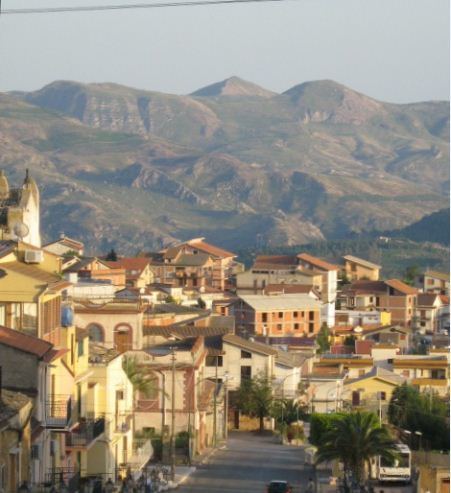Demonym(s) Ciancianesi Local time Saturday 5:24 PM | Elevation 390 m (1,280 ft) Time zone CET (UTC+1) Postal code 92012 Patron saint Anthony of Padua | |
 | ||
Weather 12°C, Wind SE at 18 km/h, 87% Humidity | ||
Cianciana is a comune (municipality) in the Province of Agrigento in the Italian region Sicily, located in the middle valley of the Platani river, about 70 kilometres (43 mi) south of Palermo and about 25 kilometres (16 mi) northwest of Agrigento. The Monte Cammarata, elevation 1,579 metres (5,180 ft) above sea level, part of the Monti Sicani chain, is nearby.
Contents
Map of 92012 Cianciana Province of Agrigento, Italy
Cianciana borders the following municipalities: Alessandria della Rocca, Bivona, Cattolica Eraclea, Ribera, Sant'Angelo Muxaro.
History
The village is situated on the valley of the River Platani and is surrounded by the Sicani Mountains, and was originally inhabited the Cretans in the second millennium BC. Cianciana also was conquered by Greeks, Romans and Arabs.
According to local chronicles, a town known as La Ferla existed in the area in 1269. This was likely destroyed by an earthquake. Archaeological excavations have found traces of Roman temples and other constructions, including a "castle" called Casaletto di Chincana, whence the name given to the area in the feudal era of the Kingdom of Sicily.
Cianciana itself was founded on 4 October 1646 as Sant'Antonio di Cianciana, under the aegis of the Joppolo feudal family. In 1713 it had 2,303 inhabitants.
The center grew in importance after the discovery of the rich sulfur mines of the area, and the number of inhabitants reached 10,000 however after the sulfur mine closed in the early 1960s rapid emigration to England, France, Germany, the United States, Canada and other parts of the world dropped the population by more than half.
